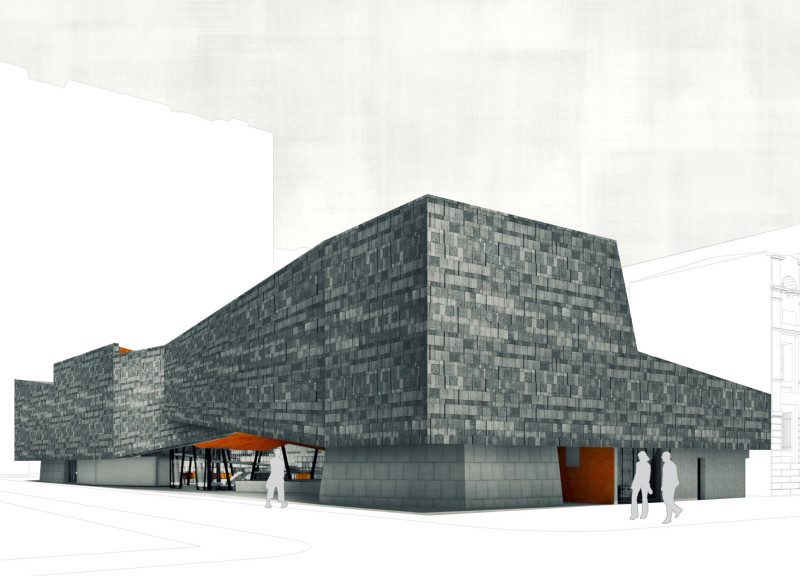5 key facts about this project
The overall architectural approach focuses on creating distinct zones within an interconnected environment, allowing for a variety of activities such as exhibitions, markets, and performances. The use of durable materials like external stone skin and corten panels reflects a commitment to longevity and visual continuity with the surrounding landscape.
Public spaces within the building include areas for local produce markets and adaptable multi-functional rooms, promoting community involvement and participation. The spatial configuration incorporates multiple levels, designed thoughtfully to support different uses while facilitating a flow of movement between spaces.
Structural integrity is maintained through exposed steel framing, which not only serves as a functional element but also contributes to the aesthetic appeal of the building. Additionally, the integration of outdoor seating and pedestrian-friendly pathways enhances accessibility and encourages social interaction among community members.
Unique Architectural Features
One of the defining aspects of "Hidden Utopia" is its responsive design that adapts to the changing needs of its users. The multifunctional areas are capable of hosting a variety of events, from art exhibitions to markets, aligning with community activities and cultural events. The rooftop garden is another unique feature, providing green space while offering panoramic views of the city, serving both aesthetic and environmental purposes.
The choice of materials is also significant. The project utilizes solid composite polycarbonate panels for natural light diffusion and perforated corten panels that allow for airflow while maintaining privacy. These material choices enhance the building's performance while also contributing to its visual identity, setting it apart from typical community centers and cultural facilities.
Sustainability is further addressed through the design. Features such as natural ventilation and shaded outdoor areas using retractable canvas shades demonstrate an awareness of environmental impact. The project seeks to minimize energy consumption while promoting ecological responsibility within the urban fabric of Adelaide.
In exploring "Hidden Utopia," readers are encouraged to review architectural plans, sections, and details to gain deeper insights into the design intent and functional capabilities of the project. The architectural choices reflect a careful consideration of both community needs and environmental considerations, making it a relevant example of contemporary architecture in urban settings.


























